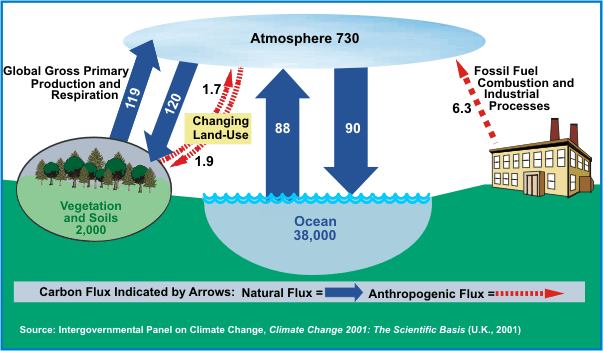Scientists agree that the primary causes of climate change are greenhouse gas emissions and the fact that carbon dioxide is the main greenhouse gas responsible for climate change. In the United States, carbon dioxide emissions from various types of energy use constitute 84% of all greenhouse gas emissions (DOE EIA 2004). Carbon dioxide is released into the atmosphere when fossil fuels are burned, such as when we use gas to run our car or natural gas to heat our home. We also release carbon dioxide when we burn wood. Plants act as carbon dioxide sinks when they absorb carbon dioxide from the air, storing the carbon in their roots, stems, and leaves and releasing the oxygen into the air. For intance, a tree holds a siginificant amount of carbon in its trunk. This is called carbon sequestration. Removing plants from the environment without replacing them with new ones, therefore, contributes to the release of carbon dioxide into the atmosphere.
This figure shows the carbon dioxide cycle. Note that while the natural cycle is largely in balance, human usage of fossil fuels is adding about 6.3 gigatons of carbon dioxide to the atmosphere every year, contributing to climate change. (Image: United Nations IPCC. Used with permission.) |



